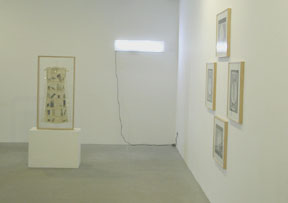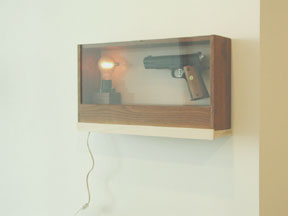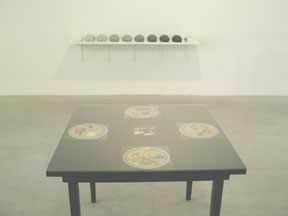| There are other
anomalous conditions and phenomena, beyond reach, or perhaps beyond human intervention.
Clouds appear in Watts' movie fragments, often on a split screen moving up on
one side and down on the other, creating shapes that then disappear. The wind
blows clouds, flowers, water, and grass. A naked woman moves under a sheet of
plastic, as though that might give her a more definitive sense of reality. It
is impossible to know the wholeness of these things. The Portrait Dress
of vinyl, cellophane, thread, and polyester has sewn into it black and white
photos of teeth, hands, nipples, eyelashes, etc., parts that incompletely reconstitute
the female body in a garment that then covers much of the body of a real woman.
Three Clouds correlates clouds, human skin, and white plexiglass by constituting
them as cubes mounted on plastic laminate pedestals. Clouds are far away and
unpredictable; now they are not. Women are out of reach; now one can focus on
some Psalter characteristics. A piece not in this show calls upon the clouds
and their movements to make music. The music is there. It just needs to be realized.
A piece that is in this show, Girl with a Mole That Lights Up, wanly focuses
attention away from the larger field of sexuality. |

© Robert Watts 2001
Portrait Dress, 1965
Vinyl, cellophane, photographic film, thread, polyester
37 1/2" x 21" x 1" |



